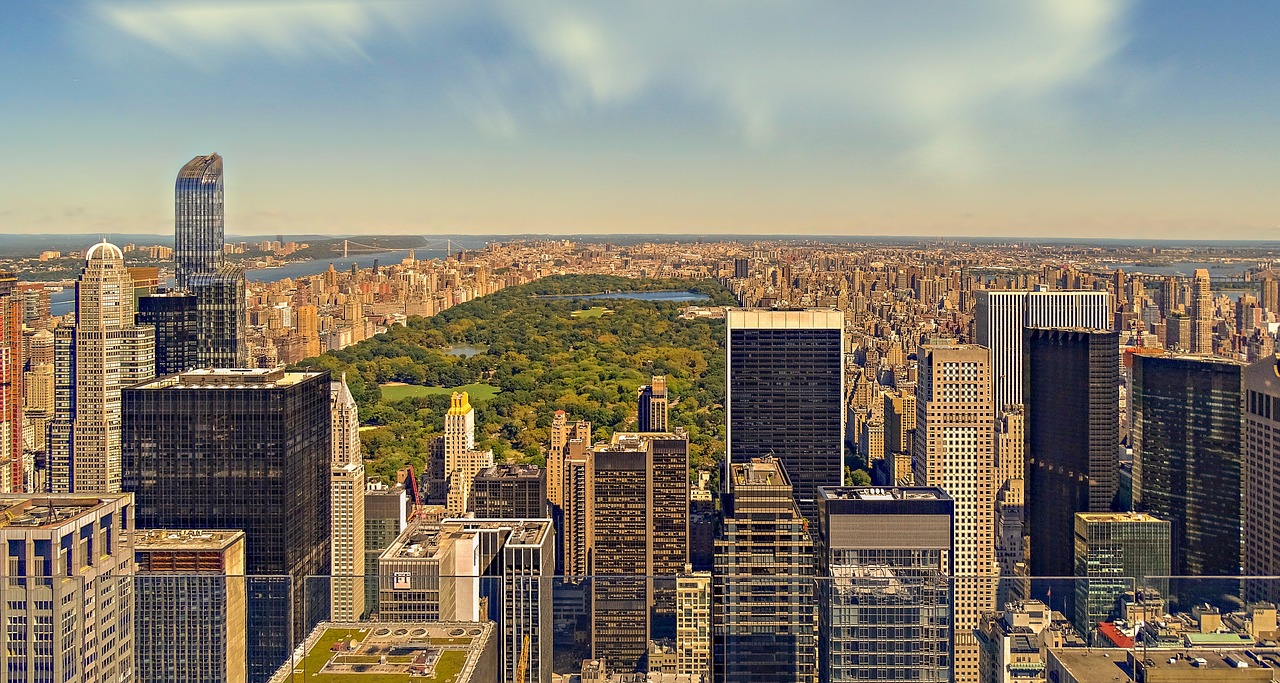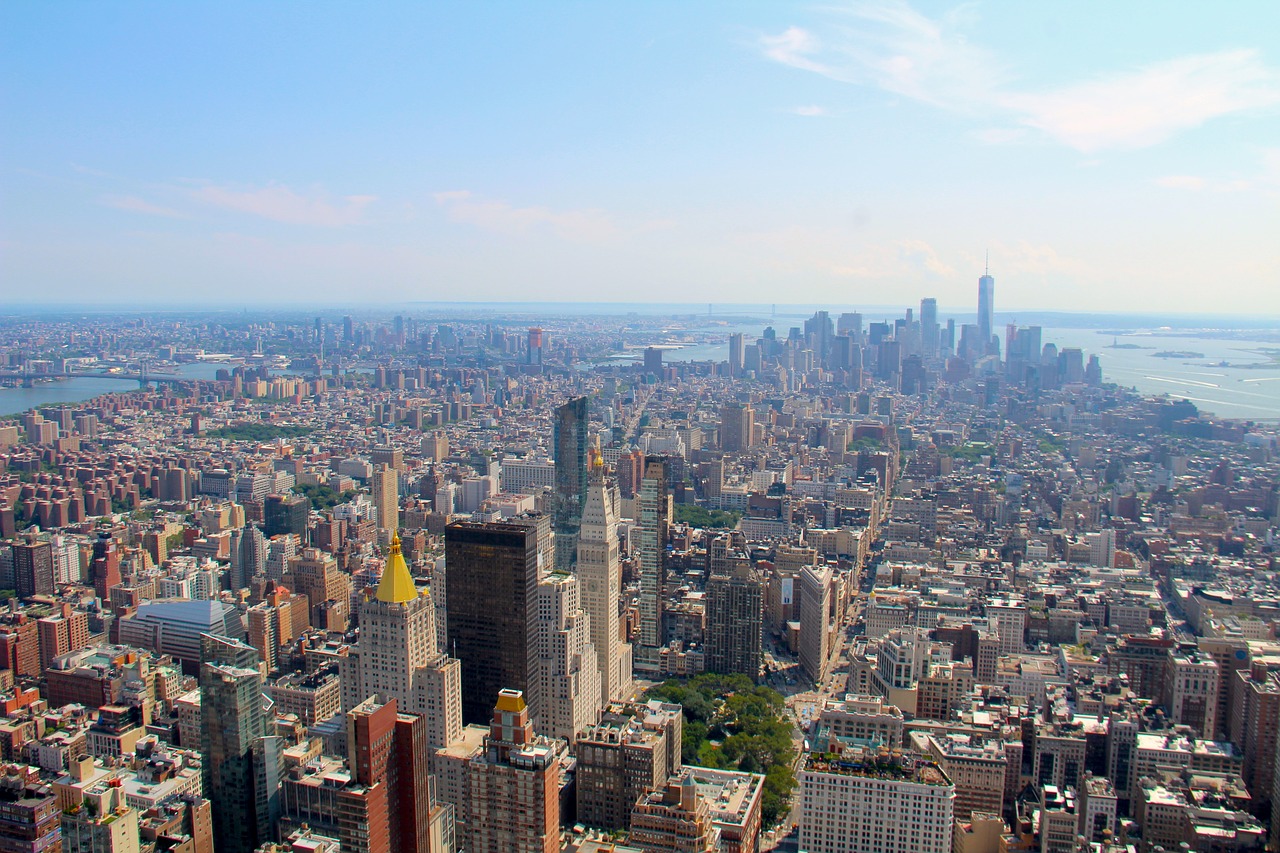Kevin J Krizek in TED How COVID19 reshaped US cities
Headlines - When you think of most cities in the US images like this come to mind, little green space, lots of fast moving cars bumper to bumper traffic, and humans waiting for curbs and crosswalks clearly outranked by the automobile. Since the dawn of car culture, urban transportation planning has been fixated on moving automobiles quickly.
Now 1/3 of all the land and cities is set up for cars. We add lanes to six lane highways, we cut down trees to widen two lane residential roads, we pave over scarce open space for surface parking. Many car owners effectively paid double to reserve a space at home in work. Providing for cars was a massive investment and has provided us in measurable flexibility in how we travel. But our dependence on them the costs the noise, the pollution have taken a toll on us, we can now do better. And here's how I've been studying transportation and Environmental Design for 25 years. I've encouraged designers, engineers, decision makers and the public to look beyond our current cars King model.
But widespread change has been slow to come. And then COVID-19 hit and we went into lockdown conventional rules that kept the auto at the top of the heap. We're ditched almost overnight. We opened up our streets for people walking in the middle of them, we open them up for outdoor dining
and those emerging techie modes of getting around town. This meant more room for regular bikes, electric bikes, and all forms of wheeled devices that are cleaner, lighter, and more convenient than cars. signs like this one up scenes like this appeared using street space to preserve physical and mental health became an imperative. Now many cities have been trying their hand at alternative street designs. For decades, these initiatives gained some traction and natural experiment was unfolding. What happens when cars take a backseat to people. It propelled my colleague and me to start studying these changes in 55 of the largest cities in the US. And what we found is thrilling.
The cities that are innovators in our study are closer to finding solutions to some of the most pressing and challenging problems of our time. like climate change, equity, safety. Seattle was one of the first to jump into action. I was on their bicycle advisory board 20 years ago with Bill Nye the Science Guy. For decades, they've dealt with that crumbling auto infrastructure, all those bridges and viaducts they've long been striving to bring more equitable access to more people on the streets. Shortly after the lockdown, the city unfurled a 30 page playbook to use their street space better. A few weeks later, 26 miles of streets were close to three car traffic, opening them up for people on foot and bike.
The city chose these particular areas because they were underserved by existing pedestrian and bicycle infrastructure. And they were in neighborhoods that were experiencing more of the impact from the pandemic both from a health perspective and an economic perspective. A month later, the city mayor of Seattle announced the 20 miles of the streets were going to be close to cars permanently. City engineers they're now working with neighborhood groups, volunteer based organizations like neighborhood greenways, to bring together residents in designing alternative visions for streets. Over the summer, on the other side of the country, Pittsburgh rolled out a bike plus plan as the number of people opting to block and bike exploded. This plan enable the city to slow down car traffic on even more streets. Now Pittsburgh has a long standing commitment to innovation. And this bike plus plan helps Usher into the transportation system, new innovative forms of mobility.
It might be that dusty Schwinn hanging on the garage now refurbished with battery power, a cargo bike, or an electric three wheeled variant of a bike that provides more comfort, safety, or protection from the weather. You see these types of modes, they can serve mostly the same purpose as cars, trucks SUVs, but they do so using a third of the space to get around. And these new modes they can be great for older people or those without a car so they can run errands or visit friends.
You see Pittsburgh is redesigning their city streets now to accommodate more of these human scale vehicles. And what we're seeing is that they're redesigning 50 miles of streets over the next two years, to bring in more welcoming environments for bike plus type vehicles. And in so doing, they're ensuring that take technological advances meet the needs of humans and not cars. Further, the bike plus plan is helping the city reduce transportation related emissions 50% by 2030, all while expanding affordable access to jobs and destinations, I'm excited to keep an eye on Pittsburgh as they share lessons for street transformations with other cities moving forward.
We also looked at Austin, Texas, a city always on the fastest growing cities list. Now that growth can be good. But the residents have felt the strain they to launch to Healthy Streets program opening up select streets to just walking and cycling. Now this action proved valuable in helping residents realize and better broaden the benefit of their tax dollars that typically pay to serve cars. new designs were implemented on South Congress, the iconic main street of Texas and downtown Austin.
We see in these historic photos how the stretch of road has changed character over time, evolving with advances in technology, civic priorities or public preferences. With City Council's direction. This stretch of road now has two fewer lanes of car traffic a third of the street space was given over to people bicycling, enrolling on scooters, taking them off the busy sidewalks better suited for dining under the oak trees and giving them increased comfort and safety.
Austin residents recently and overwhelmingly approved more than $7 billion in an unprecedented bond referendum, a nice chunk of which is going to just transform streets for active mobility and safety. Hundreds of low cost high impact projects are going to help build out a new bicycle and pedestrian infrastructure for residents of all ages and abilities. Seattle, Pittsburgh, Austin and other leading communities they've all done their research. More than half of all car trips in urban and suburban areas are less than four miles. Think about a trip to the grocery store, to the gym, or grab a bite to eat. Unlike a few years ago, we now have more mobility options for the short hops to be easily satisfied using vehicles that are lighter, cleaner and greener. Now, we didn't need a pandemic or 80% reduction in our local economies to realize that our love affair with cars has lost its luster. But the public emergency helped spur quick change.
We can now build on this momentum and push it further. You see COVID-19 has allowed us to time travel to see what our cities would be like in 10 years when there's other ways of getting around town and the car is not always King. We're past sitting in different as multitone vehicles go hurtling by our homes at highway speed. Cars are too big for these short trips. We don't need insulated hiking boots to attend ballet class within 20 minutes of where most of us live. That is in our existing communities. We already have the goods and services that we access on a daily or weekly basis.
Streets are the single largest physical assets and cities they are owned by the public and we can get more out of them to achieve our goals. But to do so, we need to open up our aperture and look beyond having them always be set up for cars. rethinking streets ramps up our our climate crisis plans nationwide. It draws into focus how these spaces are engines for equity by adopting new formula for how infrastructure resources can be spent to increase accessibility for all. And let's not lose sight of another public health crisis. The number of people who die in car crashes equal to a Boeing 737 going down every other day.
The city actions that I've described document how streets can change to accommodate emerging cost effective solutions. All while out without sacrificing much comfort, convenience, or accessibility. 100 years ago, as cities were grappling with issues of clean water and safe housing, streets were handed over to a relatively narrow goal of maximizing vehicular traffic flow. Now, owing to technological, economic and environmental change, we hold in our hand the prospects for a much brighter future and we know how to get there. We're in a once in a century situation with the pandemic.
We have the public's attention. repurposing streets by inviting smaller vehicles into our lives and de emphasizing cars is possible. The evidence shows us that in the long run will save money lives and will make our communities more just and resilient. Thank yo



